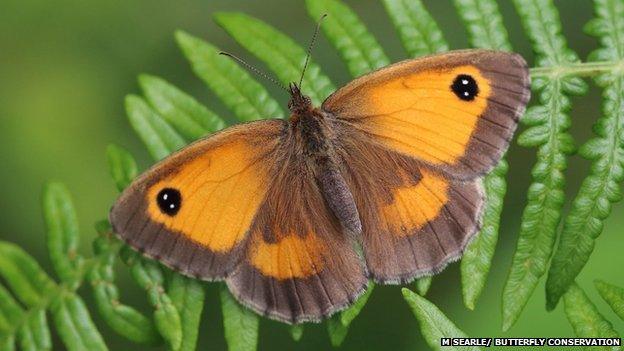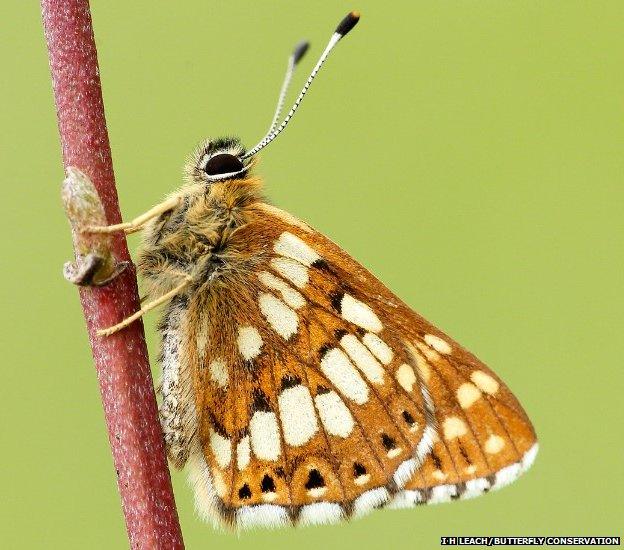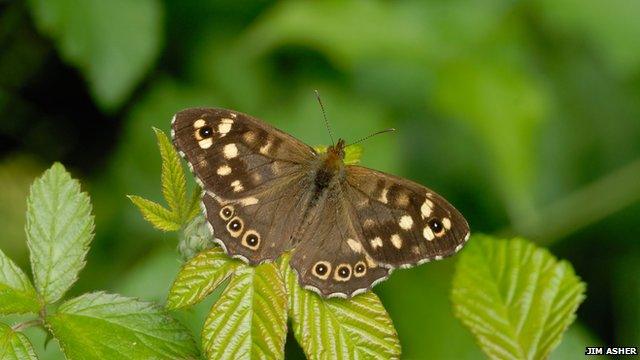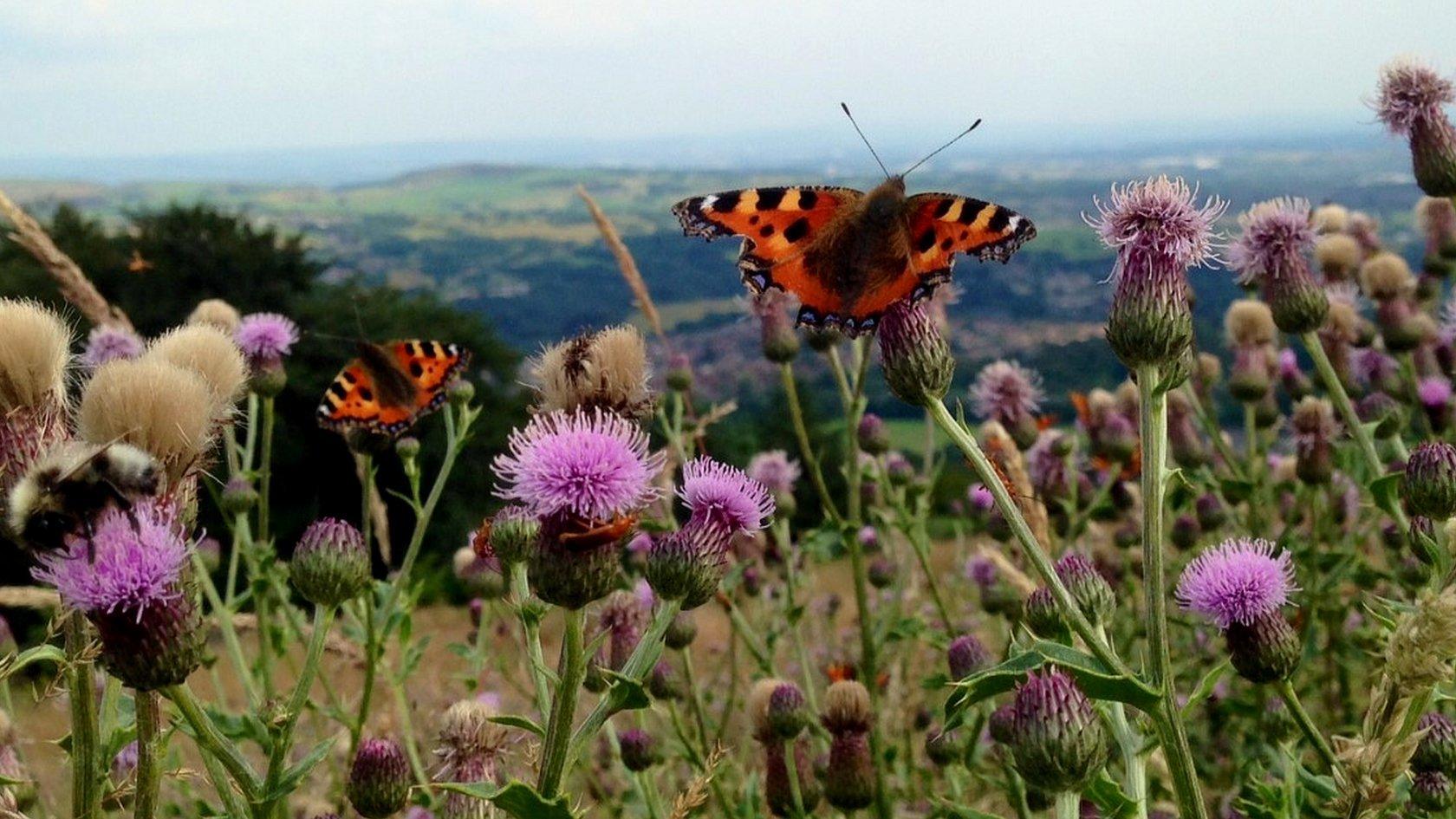UK butterflies in '40-year slump'
- Published

The gatekeeper, one of the UK's most abundant butterflies, has declined by 40% in the past decade
More than three-quarters of the UK's butterflies have declined in the past 40 years, according to a report by the charity Butterfly Conservation.
The study, State of the UK's Butterflies 2015, suggests 76% of resident and regular migrant butterflies have declined.
Some common species have suffered what the charity calls "major slumps".
Thousands of data-gathering volunteers enabled scientists to build up this long-term national picture.
And Butterfly Conservation and the Centre for Ecology & Hydrology (CEH), which helped produce this report, encouraged the public to take part in surveys to help monitor trends in UK biodiversity.
'Rare restoration'
While the main conclusions suggest a bleak outlook for the insects, the research did reveal some rare species were benefiting from targeted conservation.
According to Richard Fox, of Butterfly Conservation, one of the lead researchers, this was thanks to landscape-scale projects - protecting and restoring threatened habitats, such as managed wildflower-rich grasslands and heath-lands.
The threatened Duke of Burgundy butterfly, for example, has seen a recent increase in abundance, following years of decline, thanks to grassland restoration.
The abundance of the UK's most threatened butterfly, the high brown fritillary, has also been boosted, particularly by conservation work in Exmoor National Park, external.
"It's about protecting these sites from being destroyed," Mr Fox told BBC News. "Co-ordinated management of a landscape in a whole series of sites - that gives the butterflies a fighting chance."
The wider picture, however, is of decline, with downward trends in abundance of some of the UK's most common and widespread butterflies, including the gatekeeper and the wall, a once common farmland butterfly in southern Britain.

Focused conservation efforts appear to have driven an increase in the number of Duke of Burgundy butterflies
These trends, the report says, also provide "insights into the changing state of wider biodiversity".
While agricultural intensification and changing woodland management are believed to be driving declines in species that need very particular habitats, conservationists say climate change and pesticides may be playing "a more harmful role" for insects in the wider countryside than was previously thought.
Mr Fox said that since the 1970s, "an alarming number of common species" had declined severely.
"[But] trends over the past decade provide grounds for optimism, and show that our approach to conserving threatened butterflies can stem and even reverse declines," he added.
Butterfly Conservation vice-president Chris Packham said: "This report reveals that UK butterflies are in real trouble. Yet again we are presented with sobering evidence that our much-cherished wildlife is in dire straits."
- Published10 August 2015

- Published18 July 2014
